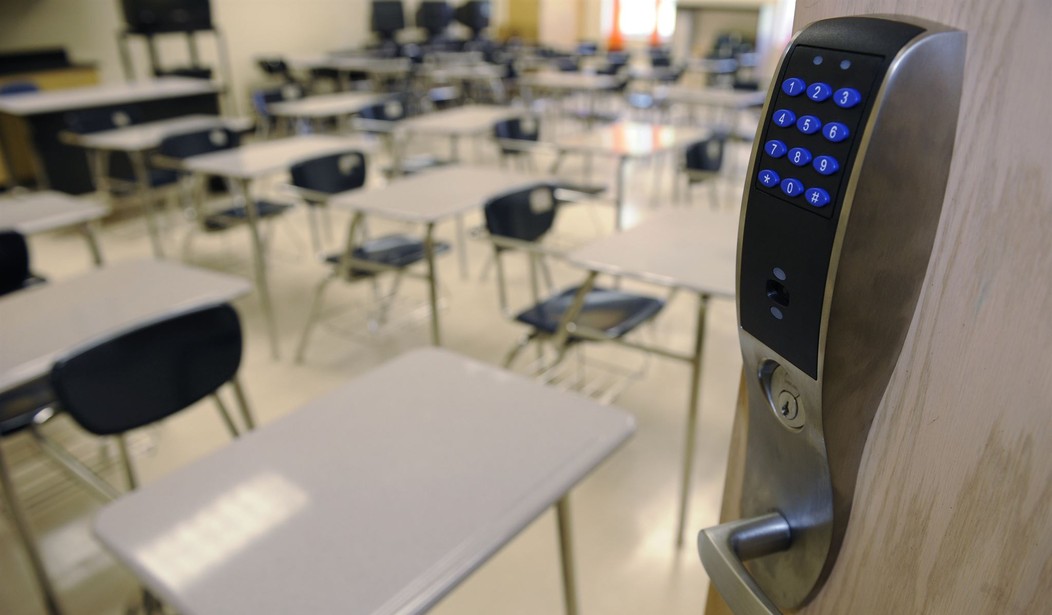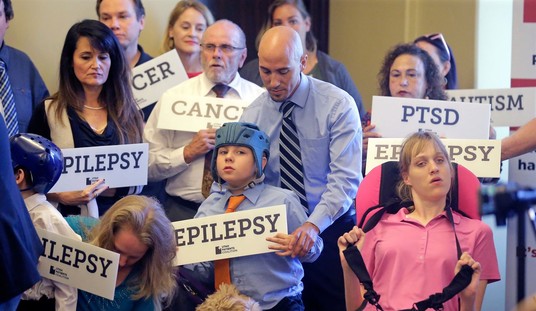Back at the beginning of June I met up with a bunch of fellow firearm instructors up in Massachusetts. Instructor Matt Mallory from PS&Ed was scheduled to be in the Bay State teaching some classes the same time as I was in town…So, Jon Green, the head of training over at Gun Owners Action League (GOAL), Charlie Cook, from Riding Shotgun With Charlie and Personal Shooting Instruction, Bill Dalpe, the treasurer at GOAL and from Patriot Firearms School, Mallory, and myself, from dirty Jersey got together to break bread. That evening was my first time meeting Dalpe, and I’m sure glad that he came out. Dalpe is not only an instructor, but he also authored the book After The Bell Rings: Giving kids the tools they need to stay safe.
It was a great evening and getting a chance to play catch up with old friends, and get to know new ones, is sometimes what this is really all about. Yes, there’s the training, the education, and the advocacy, but the meeting of all the great people really makes it easy to do all the rest. Before leaving for our separate ways, Dalpe gave me a copy of his book.
After The Bell Rings is a situational awareness and safety guide for adolescents. Dalpe says the book is geared towards 13-year-olds and up, but he said he’s had mature 8-year-olds take in his material. The book is broken up into a few different sections.
The first section Dalpe introduces the readers to the color code of awareness, the same one most of us would be aware of from Cooper. Trust is a key element that Dalpe covers within the text and he massages the color code into a more relatable, and visual, concept for kids. The Trust Ring® takes the colors from the color code and creates a circle, where the child and their immediate family would be in the middle, the green section. The ring widens through the rest of the colors, yellow, orange, and red, with each stage having its own level of scrutiny. The idea is the further away from the center, the less trust that should be there.
Dalpe stipulates, just because someone is in the “red” zone, does not mean we’re supposed to be rude or nasty to them. A young version of me once, when approached by a stranger who said “Oh what a nice little boy you are,” stated bluntly, “Don’t talk to me, you’re a stranger!” Stranger danger is important, but so is being polite. My mother was none too pleased with me that day, and my father said “What do you expect? We told him to stay away from strangers!” On the same topic, Dalpe does note that when one does feel like they are in a dangerous situation or one that’s not good for them, to throw to the wind social graces and do what needs to be done in order to get out of the scenario. Being agreeable and polite should not come at the cost of your safety.
The rest of the book goes through different scenario sets. Dalpe gives a narrative and walks readers through decisions that were made within each story. After each story, a full breakdown of the good, the bad, and the ugly is done, and the situation is used as a teachable moment. The classic “home alone” scenario is covered from a few different vantage points, the management of a “digital footprint” and dangers of social media is covered, as well as other situations to help condition kids to be more mindful.
The section on social media and what we leave behind for people to find is very important. Dalpe notes that nothing is ever completely erased from the internet and even the strictest “privacy settings” can still leave people vulnerable to having their posts available to others. One of the things he urges kids, and this is good advice for people in general, when it comes to social media, post about where you’ve been and what you’ve done, rather than where you are and what you’re doing. In chatting with Dalpe, I brought this up and he wanted to make it clear that was not an original thought, and that he got it from somewhere. Well, I thanked him, and let him know that I’d be stealing that from him now in turn. Simple things like people knowing what you’re up to, where, and when can create a recipe for disaster. This concept is explored in some of the scenarios he wrote about.
I did have a chance to chat with Dalpe about the book after I finished reading it at length. One of the things I wanted to have him recount to me, was the inception story of the book. The “why” he wrote it. What he had to say may or may not shock you. Spoiler alert, it has to do with what some might find so-called socially “acceptable”. This is Massachusetts we’re talking about, remember.
So there was in my neighborhood…I live in a very country type setting, 13,000 people in Rehoboth Mass. And there was a 15 year old boy…now, I always taught situational awareness. It’s funny how that type of class goes, because no one sees the need for it until something happens, right? Unfortunately. We had a 15 year old boy who was, I’ll just use the word abducted, for lack of a better term. A luring into this vehicle. How does a 15 year old boy get lured into a vehicle like that? That really bothered me. At age 15, you really should not be susceptible to that, in my opinion. And it turned out to be a drug matter. Drugs were involved. But that bothered me. I approached the school system…met with the Superintendent and the Assistant Superintendent, and sat down with them, and had a very candid conversation about this. Now, at the time, I taught a program called Refuse to be a Victim®. I was thinking that I could kind of tailor that for kids. Certainly, I wouldn’t teach them some of the concepts that were in there, because it wasn’t appropriate for school aged kids, but some of it definitely could, and as well as many other things I teach. I go to the superintendents, I brought a student packet, and I brought some pamphlets, and the superintendents were going through it. He’s like, “Oh, this is great. We can include this in this program and that program. How many groups of kids you want to teach at a time?” So I’m excited, right? told them, “Look, this is all gratis. This is just me giving back to the community. And I am pretty confident I can get the materials for free.” He’s getting excited, I’m getting excited, then the Assistant Superintendent flips over this promotional card, and as we know, Refuse to be a Victim®, you know as an extension, or part of the NRA. She seen those three letters and she said, “I don’t think this…I don’t think the parents will like this program.” I’m like, “Oh, no, of course they will. We’re teaching kids like, you know, how to own their own personal safety.” She goes, “I don’t think this program’s for us.” I immediately make eye contact with the Superintendent, and he kind of subliminally pushed the student packet to me, like an eighth inch…like just kind of pushed it. I couldn’t believe it. The tail was wagging the dog, this Assistant Superintendent, because she’s seen those three letters refused all this free education for kids.
After that meeting, Dalpe did not just stew in the rejection. He thought about it, marinated, and developed the plan to put together After The Bell Rings. He recounted to me the aftermath.
You ever get so mad John, that, you know, the adrenaline pumps and your hands are shaking, you’re like getting tears in your eyes? Professionally, I withdrew from the meeting. I said, “Just keep it. Read over it.” In my car I literally, John had tears in my eyes. And I was shaking, I was so mad. I mean, I just…I was beside myself. Absolutely beside myself. And that’s fuel for the writing of this book. I purposely don’t mention firearms in that version at that time. And so I wrote the book.
Since the writing of the book, he’s developed a two hour seminar, which he teaches for free to civic groups, youth groups, and the like. His attitude towards the giving back aspects of offering up his services for free is quite altruistic, and said if when people take the seminar they want to buy the book, they buy the book and that’s great. But otherwise, he indicated this is all about raising awareness.
The book is not a very long read. At around 112 pages, with easy on the eyes typesetting, reading through the book is not going to be onerous. Dalpe noted the book MSRPS for about fifteen dollars and can be purchased on his site as a paperback, or on Amazon as a kindle.
After The Bell Rings is not the end of the line for William Dalpe on the topic of situational awareness and personal responsibility for youth. He’s currently working on what he referred to as a re-write, but is in fact going to be more of a “Volume Two” than a revision of this text. In the continuation, Dalpe asserts he will be tackling the firearms subject within. As we all know, teaching firearm safety, and the do’s and don’ts to our youth is very important. Since the information in this current version will still be relevant, and sans anything gun related, he’s going to keep the book in production almost as a “lite version”, scaffolding the next one on the first. He estimates that the bigger and bolder Volume Two will be rolling out in about eight months. We’re certainly going to follow up with Bill on the regular on this one.
All in all, I’d say this book is worth a read and exploring with your middle school/high school aged youths in your life. I’d recommend reading it cover to cover before passing it off to any kids, so you have the ability to strike a dialogue should the situation arise. If the book just plants the seed of personal responsibility and self-awareness into whoever picks it up, I’d say Dalpe achieved his goal. The text should get kids thinking, and the ball rolling on them navigating the world not as easy prey to the criminal or nefarious element. Perhaps this book is the prerequisite material for becoming a sheepdog in a world of wolves?
Dalpe and I had a good chat about his book, future plans, and if you’d like to listen in on our full conversation, you can do so HERE or in the embed below.








Join the conversation as a VIP Member